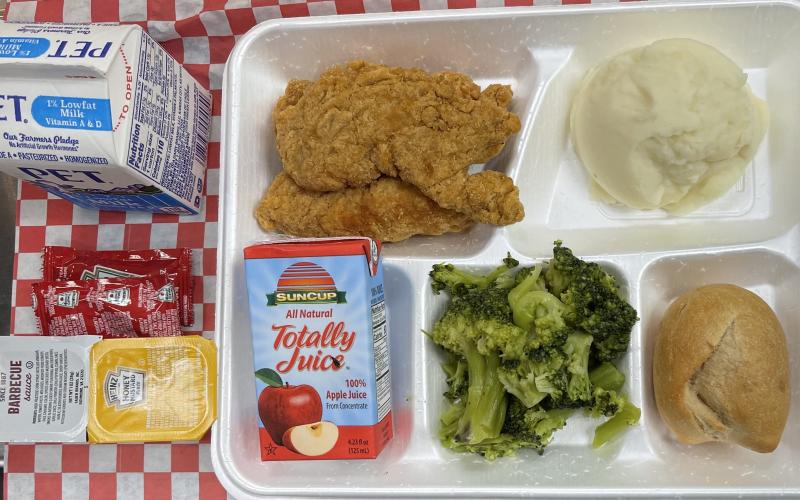Larry Griffin
lgriffin@thesmokymountaintimes.com
The Swain County School Board has adopted the CEP program, which will let every student eat a free breakfast and lunch at school if they want to.
It will go into effect this coming school year and replace the current system, which has students either paying for their meals, charging them to the school and incurring debt, or applying for free & reduced programs.
The program was adopted at a special school board meeting Wednesday, May 24, after some discussion at a previous meeting earlier in the month. The Smoky Mountain Times was unable to attend the meeting, as the county building where the meeting took place was locked inexplicably.
CEP stands for Community Eligibility Provision and comes from the Healthy Hunger Free Kids Act of 2010. CEP allows for funding for meals for students, which is reimbursed by the state government based on how much participation there is in the meals being eaten.
According to a presentation from School Nutrition Director Michele Herron, they want to make sure enough students are eating the meals and that the school system won’t incur monumental amounts of debt from offering the program.
Under CEP, if not enough meals are eaten, the school system cannot be reimbursed for them and would have to pay for those left over.
That’s where the problem came into view for Superintendent Mark Sale and the school system – currently, not as many students eat the meals at school to justify it. Sale and Herron think they can change that.
To ensure that the CEP will be beneficial for the school system, Herron has already been doing surveys of middle school and high school students to see what would make them eat the free meals as much as possible.
Sale and Herron were adamant that they would have a coordinated effort to make sure students ate the free CEP meals. That will include the aforementioned surveys, along with social media and newspaper promotions, “better recipes” and “themed lunch events,” per Herron’s presentation.
“On the surveys, they could tell me what they wanted to eat,” Herron said. “A lot of it was doable. Some of them said things like ‘add salt,’ which goes against regulations. We still have to stay within regulations.”
Debt problems
The debt comes from the fact that students are allowed to charge one meal to the school per day, which Sale said is a way to make sure students are eating something.
“We wouldn’t turn a student away from eating,” Sale said. “We would not force a student just to get a peanut butter and jelly sandwich, either. Though if they choose a PB&J, they can have that.”
But the amount of debt has been drastically higher the last few years, which Sale attributed to the effects of the pandemic and its tumultuous ripples through the economy. The last few years have seen families struggling more with financial matters than many were previously.
“Before the pandemic, debt rarely exceeded $5,000 per year,” Sale said. “Now, it’s over $40,000 as of the end of March. It’s eight times as high. We believe that’s because of the economic pressures many families face.”
Hopes for the future
To Herron’s and Sale’s delight, the surveys that have come back so far show positive results. Herron said the current numbers of students who answered that they eat breakfast at school was at 15%, while the percentage of those who said they would eat breakfast if it was free was 50%.
For lunch, the numbers continued the upward trend – 35% said they eat lunch now, while 62% said they would if it was free with CEP.
Sale said the graphs with those percentages had convinced the school board to vote for CEP at their May 24 meeting.
“[CEP] will benefit the students,” Sale said. “They don’t have to worry where they’ll eat, they don’t have to worry about being shamed for not having the money.”

